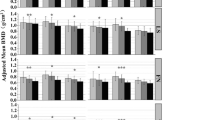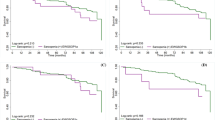Abstract
With considerable variation including potential sex-specific differential rate of skeletal muscle loss, identifying modifiable factors for sarcopenia will be pivotal to guide targeted interventions. This study seeks to identify clinical and biological correlates of sarcopenia in community-dwelling older adults, with emphasis on the role of anabolic and catabolic stimuli, and special reference to gender specificity. In this cross-sectional study involving 200 community-dwelling and functionally independent older adults aged ≥50 years, sarcopenia was defined using the Asian Working Group for Sarcopenia criteria. Comorbidities, cognitive and functional performance, physical activity and nutritional status were routinely assessed. Biochemical parameters included haematological indices, lipid panel, vitamin D level, anabolic hormones [insulin-like growth factor-1 (IGF-1), free testosterone (males only)] and catabolic markers [inflammatory markers (interleukin-6, C-reactive protein) and myostatin]. Multiple logistic regression was performed to identify independent predictors for sarcopenia. Age was associated with sarcopenia in both genders. Malnutrition conferred significantly higher odds for sarcopenia in women (OR = 5.71, 95 % CI 1.13–28.84.44, p = 0.035) while higher but acceptable range serum triglyceride was protective in men (OR = 0.05, 95 % CI 0.00–0.52, p = 0.012). Higher serum myostatin independently associated with higher odds for sarcopenia in men (OR = 1.11, 95 % CI 1.00–1.24, p = 0.041). Serum IGF-1 was significantly lower amongst female sarcopenic subjects, with demonstrable trend for protective effect against sarcopenia in multiple regression models, such that each 1 ng/ml increase in IGF-1 was associated with 1 % decline in odds of sarcopenia in women (p = 0.095). Our findings support differential pathophysiological mechanisms for sarcopenia that, if corroborated, may have clinical utility in guiding sex-specific targeted interventions for community-dwelling older adults.

Similar content being viewed by others
References
Barberger-Gateau P, Commenges D, Gagnon M et al (1992) Instrumental activities of daily living as a screening tool for cognitive impairment and dementia in elderly community dwellers. J Am Geriatr Soc 40:1129–1134
Batsis JA, Mackenzie TA, Barre LK et al (2014) Sarcopenia, sarcopenic obesity and mortality in older adults: results from the National Health and Nutrition Examination Survey III. Eur J Clin Nutr 68:1001–1007
Brinkley BE, Leng X, Miller ME et al (2009) Chronic inflammation is associated with low physical function in older adults across multiple comorbidities. J Gerontol A Biol Sci Med Sci 64:455–461
Chan M, Lim YP, Ernest A, Tan TL (2010) Nutritional assessment in an Asian nursing home and its association with mortality. J Nutr Health Aging 14:23–28
Chen LK, Liu LK, Woo J et al (2014) Sarcopenia in Asia: consensus report of the Asian Working Group for Sarcopenia. J Am Med Dir Assoc 15:95–101
Clark BC, Manini TM (2010) Functional consequences of sarcopenia and dynapenia in the elderly. Curr Opin Clin Nutr Metab Care 13:271–276
Cruz-Jentoft AJ, Landi F, Schneider SM et al (2014) Prevalence of and interventions for sarcopenia in ageing adults: a systematic review. Report of the International Sarcopenia Initiative (EWGSOP and IWGS). Age Ageing 43:748–759
Eggert ML, Wallaschofski H, Grotevendt A et al (2014) Cross-sectional and longitudinal relation of IGF and IGF-binding protein 3 with lipid metabolism. Eur J Endocrinol 171:9–19
Elliot B, Renshaw D, Getting S, Mackenzie R (2012) The central role of myostatin in skeletal muscle and whole body homeostasis. Acta Physiol 205:324–340
Fiatarone MA, O’Neill EF, Ryan ND et al (1994) Exercise training and nutritional supplementation for physical frailty in very elderly people. N Engl J Med 330:1769–1775
Fielding RA, Vellas B, Evans WJ et al (2011) Sarcopenia: an undiagnosed condition in older adults. Current consensus definition: prevalence, etiology, and consequences. International working group on sarcopenia. J Am Med Dir Assoc 12:249–256
Fontes JA, Rose NR, Cihakova D (2015) The varying faces of IL-6: from cardiac protection to cardiac failure. Cytokine 74:62–68
Goodman-Gruen D, Barrett-Connor E (1997) Epidemiology of insulin-like growth factor-I in elderly men and women. The Rancho Bernardo Study. Am J Epidemiol 145:970–976
Guralnik JM, Simonsick EM, Ferruci L et al (1994) A short physical performance battery assessing lower extremity function: association with self-reported disability and prediction of mortality and nursing home admission. J Gerontol 49:M85–94
Harridge SD (2003) Ageing and local growth factors in muscle. Scand J Med Sci Sports 13:34–39
Harris TB, Kiel D, Roubenoff R et al (1997) Association of insulin-like growth factor-I with body composition, weight history, and past health behaviors in the very old: the Framingham Heart Study. J Am Geriatr Soc 45:133–139
Hofmann M, Halper B, Franzke B et al (2015) Serum concentrations of insulin-like growth factor-1, members of the TGF-beta superfamily and follistatin do not reflect different stages of dynapenia and sarcopenia in elderly women. Exp Gerontol 64:35–45
Janssen I, Shepard DS, Katzmarzyk PT, Roubenoff R (2004) The healthcare costs of sarcopenia in the United States. J Am Geriatr Soc 52:80–85
Kleevil VL, Luben R, Dalzell N et al (2015) Cross-sectional associations between different measures of obesity and muscle strength in men and women in a British cohort study. J Nutr Health Aging 19:3–11
Korostishevsky M, Steves CJ, Malkin I et al (2015) Genomics and metabolomics of muscular mass in community-based sample of UK females. Eur J Hum Genet. doi:10.1038/ejhg.2015.85
Kostka T, Arsac LM, Patricot MC et al (2000) Leg extensor power and dehydroepiandrosterone sulfate, insulin-like growth factor-I and testosterone in healthy active elderly people. Eur J Appl Physiol 82:83–90
Krakauer NY, Krakauer JC (2012) A new body shape index predicts mortality hazard independently of body mass index. PLoS One 7(7), e39504
Landi F, Liperoti R, Fusco D et al (2012) Prevalence and risk factors of sarcopenia among nursing home older residents. J Gerontol A Biol Sci Med Sci 67:48–55
Lee WJ, Liu LK, Peng LN et al (2013) Comparisons of sarcopenia defined by IWGS and EWGSOP criteria among older people: results from the I-Lan longitudinal aging study. J Am Med Dir Assoc 14:528.e1–7
Mahoney FI, Barthel D (1965) Functional evaluation: the Barthel Index. Md State Med J 14:61–65
McPherron AC, Lee SJ (1997) Double muscling in cattle due to mutations in the myostatin gene. Proc Natl Acad Sci U S A 94:12457–12461
McPherron AC, Lawler AM, Lee SJ (1997) Regulation of skeletal muscle mass in mice by a new TGF-beta superfamily member. Nature 387:83–90
Michaud M, Balardy L, Moulis G et al (2013) Proinflammatory cytokines, aging and age-related diseases. J Am Med Dir Assoc 14:877–82
Newman AB, Haggerty CL, Goodpaster B et al (2003) Strength and muscle quality in a well-functioning cohort of older adults: the Health, Aging and Body Composition Study. J Am Geriatr Soc 51:323–330
Padhi D, Higano CS, Shore ND et al (2014) Pharmacological inhibition of myostatin and changes in lean body mass and lower extremity muscle size in patients receiving androgen deprivation therapy for prostate cancer. J Clin Endocrinol Metab 99:E1967–E1975
Pal M, Febbraio MA, Whitham M (2014) From cytokine to myokine: the emerging role of interleukin-6 in metabolic regulation. Immunol Cell Biol 92:331–339
Patel HP, Syddall HE, Jameson K et al (2013) Prevalence of sarcopenia in community-dwelling older people in the UK using the European Working Group on Sarcopenia in Older People (EWGSOP) definition: findings from the Hertfordshire Cohort Study (HCS). Age Ageing 42:378–384
Payette H, Roubenoff R, Jacques PF et al (2003) Insulin-like growth factor-1 and Interleukin 6 predict sarcopenia in very old community-living men and women: the Framingham Heart Study. J Am Geriatr Soc 51:1237–1243
Perna S, Guido D, Grassi M, Rondanelli M (2015) Association between muscle mass and adipo-metabolic profile: a cross-sectional study in older subjects. Clin Interv Aging 10:499–504
Perrini S, Laviola L, Carreira MC et al (2010) The GH/IGF1 axis and signalling pathways in muscle and bone: mechanisms underlying age-related skeletal muscle wasting and osteoporosis. J Endocrinol 205:201–210
Ratkevicius A, Joyson A, Selmer I et al (2011) Serum concentrations of myostatin and myostatin-interacting proteins do not differ between young and sarcopenic elderly men. J Gerontol A Biol Sci Med Sci 66:620–626
Reisz-Porszasz S, Bhasin S, Artaza JN et al (2003) Lower skeletal muscle mass in male transgenic mice with muscle-specific overexpression of myostatin. Am J Physiol Endocrinol Metab 285:E876–E888
Rondanelli M, Guido D, Opizzi A et al (2014) A path model of sarcopenia on bone loss in elderly subjects. J Nutr Health Aging 18:15–22
Sahadevan S, Lim PP, Tan NJ, Chan SP (2000) Diagnostic performance of two mental status tests in the older Chinese: influence of education and age on cut-off values. Int J Geriatr Psychiatry 15:234–241
Scicchitano BM, Rizutto E, Musaro A (2009) Counteracting muscle wasting in aging and neuromuscular disease: the critical role of IGF-1. Aging 13(1):451–457
Thacher TD, Clarke BL (2011) Vitamin D insufficiency. Mayo Clin Proc 86:50–60
Trendelenburg AU, Meyer A, Rohner D et al (2009) Myostatin reduces Akt/TORC1/p70S6K signaling, inhibiting myoblast differentiation and myotube size. Am J Physiol Cell Physiol 296:C1258–1270
Volpato S, Bianchi L, Cherubini A et al (2014) Prevalence and clinical correlates of sarcopenia in community-dwelling older people: application of the EWGSOP definition and diagnostic algorithm. J Gerontol A Biol Sci Med Sci 69:438–446
von Haehling S, Morley JE, Anker SD (2010) An overview of sarcopenia: facts and numbers on prevalence and clinical impact. J Cachexia Sarcopenia Muscle 1:129–133
Wade DT, Legh-Smith J, Langton Hewer R (1985) Social activities after stroke: measurement and natural history using the Frenchay Activities Index. Int Rehabil Med 7:176–181
Wagner KR, Fleckenstein JL, Amato AA et al (2008) A phase I/II trial of MYO-029 in adult subjects with muscular dystrophy. Ann Neurol 63:561–571
White TA, LeBrasseur NK (2014) Myostatin and sarcopenia: opportunities—a mini-review. Gerontology 60:289–293
Yamada M, Nishiguchi S, Fukutani N et al (2015) Mail-based intervention for sarcopenia prevention increased anabolic hormone and muscle mass in community-dwelling Japanese older adults: the INE (Intervention by Nutrition and Exercise) study. J Am Med Dir Assoc 16:654–660
Yarasheski KE, Bhasin S, Sinha-Hikim I et al (2002) Serum myostatin-immunoreactive protein is increased in 60–92 year old women and men with muscle wasting. J Nutr Health Aging 6:343–348
Acknowledgments
We thank Ms. Yang Jun, Department of Pharmacology, National University of Singapore for her assistance in the blood biomarker analysis, as well as Mr. Samuel Neo, medical social worker, Department of Continuing and Community Care, Tan Tock Seng Hospital, for his assistance in recruitment through the various Senior Activity Centres (SAC). We extend our appreciation to the following SACs [Wesley SAC, Care Corner SAC, Xin Yuan Community Service, Potong Pasir Wellness Centre, Tung Ling Community Services (Marine Parade and Bukit Timah), Viriya Community Services-My Centre@Moulmein, House of Joy) and the study participants who have graciously consented to participate in the study.
Author information
Authors and Affiliations
Corresponding author
Ethics declarations
Informed written consent was obtained from the participant, and the study was approved by the Domain Specific Review Board (DSRB) of the National Healthcare Group (NHG).
Funding support
This study was funded by Lee Foundation Grant 2013.
Conflict of interest
The authors declare that they have no competing interests.
About this article
Cite this article
Tay, L., Ding, Y.Y., Leung, B.P. et al. Sex-specific differences in risk factors for sarcopenia amongst community-dwelling older adults. AGE 37, 121 (2015). https://doi.org/10.1007/s11357-015-9860-3
Received:
Accepted:
Published:
DOI: https://doi.org/10.1007/s11357-015-9860-3




